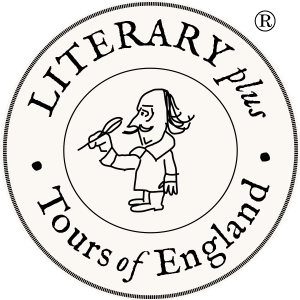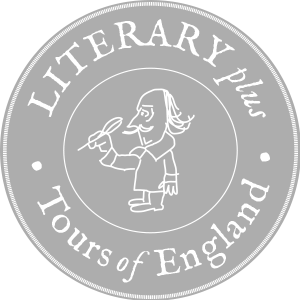
Jane Austen's House
Jane Austen
Bateman's
Rudyard Kipling
Monk's House
Virginia Woolf
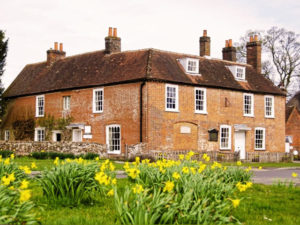

Bateman’s
Rudyard Kipling
The tours begin and end at London Heathrow airport (LHR).
The details below describe the tour highlights. Supplementary sites and stopping points will be included wherever feasible. All tours can be customized. So, once you’ve made a selection, we’ll contact you to review and refine the itinerary to reflect your personal preferences.
The guide prices shown below relate to escorted tours and assume double room occupancy in luxurious 4- or 5-star city center hotels. The actual price of your tour will depend on the make-up of your tour party, your accommodation preference, special needs, seasonal variations, availability and currency exchange rates. You will be provided with a firm quote before you book.
Guide price $4,650 per person (escorted / based on 2 people)
Windsor
An historic market town on the River Thames, some twenty miles west of London, Windsor is best known as the site of the hugely impressive Windsor Castle. A royal residence for more than a thousand years and the Queen’s favorite weekend retreat, it’s the oldest and largest inhabited castle in the world.
Winchester
King Alfred the Great’s 9th Century capital, Winchester is a charming small city criss-crossed by ancient streets and dominated by one of the largest Gothic cathedrals in Europe. Jane Austen and Izaak Walton (author of The Compleat Angler) are buried here.
Jane was born in 1775 in the nearby village of Steventon, where her father was the parish rector, and spent much of her early life there. Following numerous moves around southern England, notably Bath (1801-06), the family returned to Hampshire in 1809. Jane Austen’s House in the village of Chawton – now a magical museum – is where she spent the last eight years of her short life. She wrote five of her six major novels here: Sense and Sensibility, Pride and Prejudice, Mansfield Park, Emma and Persuasion.
Close by, in the village of Selborne, is Gilbert White’s House and Gardens, where White lived from 1751 until his death in 1793. It was Selborne and its surrounding landscape that inspired White’s life-long investigation of the natural world, culminating in his world-famous book The Natural History and Antiquities of Selborne (1789). His grave and memorial windows are to be found in Selborne’s St Mary’s Church.
Portsmouth
One of the world’s most famous seaports and home of the Royal Navy, Portsmouth is steeped in maritime history from Tudor times to D-Day. Charles Dickens was born in the city in 1812 and spent the first three years of his childhood there. The modest family home is now the Charles Dickens Birthplace Museum. Arthur Conan Doyle moved to Portsmouth as a young doctor in 1882 and set himself up in medical practice. However, his first love was writing. It was in Portsmouth that he wrote A Study in Scarlet, published in 1887, which introduced the world to Sherlock Holmes and set Doyle on the path to worldwide fame. The Portsmouth City Museum houses collections dedicated to both Dickens and Doyle.
Windsor Castle
The Queen’s weekend retreat
Ashdown Forest
Winnie-the-Pooh
Highclere Castle
Downton Abbey

Monk’s House
Virginia Woolf

Windsor Castle
The Queen’s weekend retreat
Guide price $7,390 per person (escorted / based on 2 people)
In addition to all of the above …
Hastings
This historic coastal town is famous for the Battle of Hastings of 1066 – arguably the best-known date in English history – which brought William the Conqueror to the throne as the country’s first Norman king. More recently Hastings was featured as the location for the TV detective drama Foyle’s War (2002-15) starring Michael Kitchen. It provides an ideal base for exploring many significant sites in East Sussex.
Monk’s House – an 18th Century cottage in the tranquil village of Rodmell – was the home of Virginia Woolf and her husband, Leonard. They bought it in 1919, initially staying there in the summer months before taking up full-time residence in 1940. It was in the small wooden lodge at the bottom of the lovely garden that Virginia conceived many of her novels, including Mrs Dalloway (1925) and To The Lighthouse (1927). Other members of the Bloomsbury Group – some of the twentieth century’s most pioneering artists, writers and thinkers – were frequent visitors, including TS Eliot and EM Forster. Virginia drowned herself in the nearby River Ouse in 1941 and her ashes were buried in the garden of Monk’s House. Virginia’s sister, the artist Vanessa Bell, lived at Charleston, the summer retreat of the Bloomsbury Group, in the nearby village of Firle.
Lamb House – an 18th Century house in the lovely small town of Rye on the Sussex coast – was the home of the American novelist Henry James from 1898 to 1914. It was while living here that James wrote The Wings of the Dove (1902), The Ambassadors (1903) and The Golden Bowl (1904). The walled garden remains as James designed it and includes the graves of his much-loved dogs. The house was later occupied by EF Benson, author of the Mapp and Lucia novels, which were adapted as a popular TV series (1985-86) starring Geraldine McEwan and Prunella Scales. Much of the series was filmed in Rye.
Bateman’s – a grand 17th Century house in the village of Burwash – was the beloved home of Rudyard Kipling. He bought the property in 1902, following the success of his novel Kim (1901), and lived there until his death in 1936. In 1907 Kipling was awarded the Nobel Prize in Literature (on display in the house), the first English-language writer to receive the prize and its youngest recipient to date. Bateman’s – this “good and peaceable place” – remains much as Kipling left it.
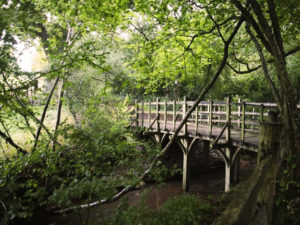
Ashdown Forest
Winnie-the-Pooh
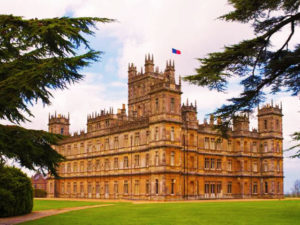
Highclere Castle
Downton Abbey
Guide price $10,150 per person (escorted / based on 2 people)
In addition to all of the above …
Winchester
An extra day in Winchester provides time to visit nearby Highclere Castle, better known as the principal location for Downton Abbey (TV series, 2010-15, and feature film, 2019). A stately country house in the Jacobean style, set in a park designed by Capability Brown, this is the impressive home of the Earl and Countess of Carnarvon. Exteriors and interiors were freely used in the much-loved TV series.
Brighton
The famous south coast resort, with its many tourist attractions, ranks as the UK’s most popular seaside destination for overseas visitors. Numerous fascinating sites are within easy reach of Brighton: notably Ashdown Forest, the setting for the timeless Winnie-the-Pooh stories. Pooh’s creator, AA Milne, lived on the northern edge of the forest and went walking there with his son, Christopher Robin. There’s a memorial plaque to Milne and a popular walk takes in many Pooh-related locations. The bittersweet movie Goodbye Christopher Robin (2017) was largely filmed in the Forest.
Close by, the delightful Bluebell Railway runs through eleven miles of classic Sussex countryside. Its lovingly maintained steam trains and old-style stations have been used in countless movies and TV shows including several Poirot episodes (TV, 1989-2013), Foyle’s War (TV, 2002-15), Downton Abbey (TV, 2010-15) and Grantchester (TV, 2014 to date).
